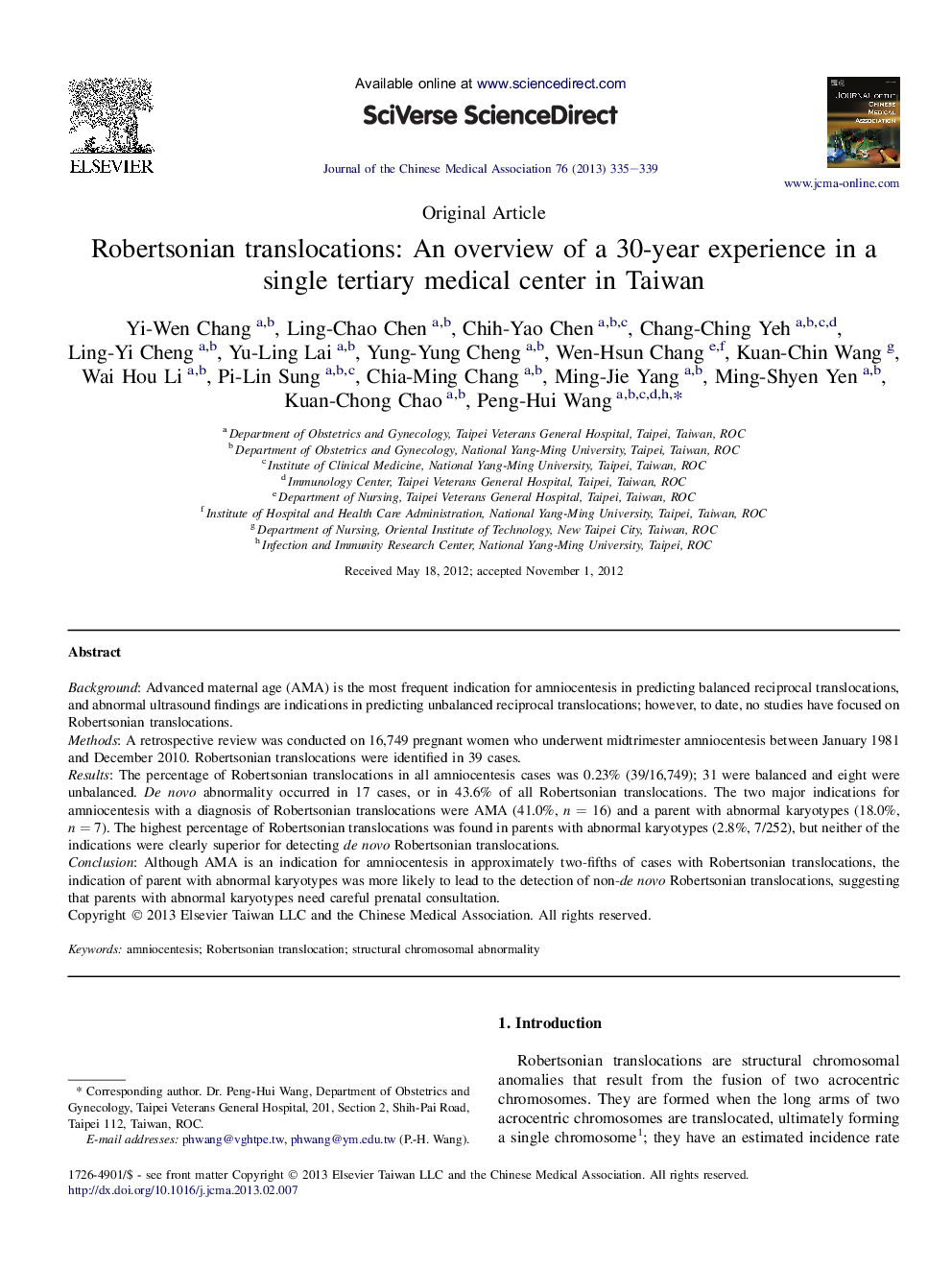| Article ID | Journal | Published Year | Pages | File Type |
|---|---|---|---|---|
| 3476409 | Journal of the Chinese Medical Association | 2013 | 5 Pages |
BackgroundAdvanced maternal age (AMA) is the most frequent indication for amniocentesis in predicting balanced reciprocal translocations, and abnormal ultrasound findings are indications in predicting unbalanced reciprocal translocations; however, to date, no studies have focused on Robertsonian translocations.MethodsA retrospective review was conducted on 16,749 pregnant women who underwent midtrimester amniocentesis between January 1981 and December 2010. Robertsonian translocations were identified in 39 cases.ResultsThe percentage of Robertsonian translocations in all amniocentesis cases was 0.23% (39/16,749); 31 were balanced and eight were unbalanced. De novo abnormality occurred in 17 cases, or in 43.6% of all Robertsonian translocations. The two major indications for amniocentesis with a diagnosis of Robertsonian translocations were AMA (41.0%, n = 16) and a parent with abnormal karyotypes (18.0%, n = 7). The highest percentage of Robertsonian translocations was found in parents with abnormal karyotypes (2.8%, 7/252), but neither of the indications were clearly superior for detecting de novo Robertsonian translocations.ConclusionAlthough AMA is an indication for amniocentesis in approximately two-fifths of cases with Robertsonian translocations, the indication of parent with abnormal karyotypes was more likely to lead to the detection of non-de novo Robertsonian translocations, suggesting that parents with abnormal karyotypes need careful prenatal consultation.
